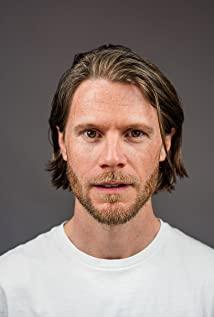This film is completely the spiritual continuation of the film, but the content of the narrative is completely different. It does not describe the appearance of the murderer, nor does it talk about the influence of external factors.
This is a movie that portrays the spirit. Rarely have I seen something so profound in years.
Straight to the point, the title uses a British nursery rhyme - Jack here can refer to anyone like "You can't be a serial killer, you're too cowardly" - did Jack really kill? Or turn the question into "Which Jack is the killer Jack?"
In fact, the repeatedly rebuilt house itself hints at the gist of the movie: Jack is everyone. Murder lives in the hearts of mankind. The "Jack" in each event is both an isolated person and a malicious collection of continuous people. Kill, kill, kill... The historical root of the Holocaust is paranoia? Arrogant? Is ideology or is it a deeply ingrained tradition of human beings?
Both are not. Why are we appalled by the brutality in the concentration camps? Why are we so perplexed or even relished by serial killings? Yes, it is relish. Our instinctive "envy" of homicide cases. Excited about the brutal dismemberment; terrified; restless...
Human beings themselves have the factor of destruction and self-destruction. This is because only human beings recognize death. Animals don't understand death. They are simply startled by the corpses of their companions, which cannot be eaten (and of course many species that eat the same corpses), beyond the comprehension of animals. They know death but cannot understand the full meaning of death. So animals just instinctively avoid (or instinctively eat), everything is driven by instinct.
The fruits of grapes are carried by animals only for their seeds. Its being left to rot in nature has no other meaning than rot. But in the hands of people it is different. People will use this natural change to make wine.
People use everything.
Now it is time to discuss the subject of human art.
All Jack said is the true meaning of art - the essence of art is a skill, a process in which subject consciousness is connected with the object world. All paintings, sculptures, poems or music, whether realistic or abstract, are a consumption of subject energy. It does not involve external experience, even if it is only photography that fully captures external experience, but as long as the subject participates in it, it will be different.
blasphemy. The word has absolutely nothing to do with nature itself, but is imposed on nature by religious ideas. However, nature treats life with indifference. Naturally, no discrimination, only people will intentionally kill.
Humans show a brutal scene (simulation) that makes moviegoers uncomfortable! But bombs go off in Syria every day.
In fact, we are simply uncomfortable with the evil around us. Or even further, we are just terrified of the evil that is done against us. We do not care about the pain and misery of others.
No one wants to help! Others are hell. Everyone is Jack. Cruel is the person himself, this is the biggest irony, isn't it? However, the pain did not lessen. The greatest pain of man is to realize this possible prospect of destruction and self-destruction... When someone abandons all the established rules of society, he can do whatever he wants, he can go to kindergarten and kill children, he can kill casually in the street. This is an atrocity that goes against the rules!
Even if the laws are reasonable, we all have the potential to be artists. In other words, the greatest sublimation of man is the intense stimulation of "useless but gorgeous" brought by artistic creation.
This "useless" stimulus suddenly arouses human's subjective observation of self, death. If useless things lack functional value, what's the point of creating them? Is it instinct? Let's call it instinct. As Freud affirmed, people have the instinct to die and the instinct of art (creation).
Why are we so obsessed with creating useless things? From primitive dance and poetry to the invention of religion, how many useless things have we created!
Art rises from the quagmire of uselessness, and then transforms itself into man's own totem. People are tumbling up and down in this meaningless pit...it's too much like death. So much like the sacred world Bataille described.
And so everyone has the possibility to become an artist, that is, we all have to die.
Art is the twin brother of death.
In fact, the discussion about art has not stopped since the beginning, and these long-winded conversations are not too alienated because we all have the ability to appreciate art. Otherwise, the concept of acceptance aesthetics would be out of the question - and that's the brutal truth the movie reveals: everyone understands art/everyone knows what death is about.
This goes back to the topic of Jack's house building at the beginning. What is the difference between useful things and useless things? It's nothing more than human judgment. Human rules; human judgments. A good house, a good thing for Jack, and what Jack wanted to do in the first place. Blame the rapping stupid woman.
Originally Jack was just busy building his own house, but in the middle of it, he killed such a fool - accident, no - no, yes. This is an accident. Jack is not a mental patient, even DSM-5 will not judge that Jack is mentally ill at the moment. No, it was all by accident! Or in other words this can happen to anyone. Because stupidity is a natural attribute that people are born with, and it also exists in everyone, isn't it?
It was stupidity that led to the killing. Stupidity can not only lead to roaring laughter, it can also lead to killing! This lesson should indeed be kept in mind.
Then, the first body appeared.
What is it about killing that makes us fascinated (or attracted)? Not the cause, the means and the process of killing. No, we focus on the corpse - as Benjamin said, "...in this living room where only murder takes place," our first reaction to murder is, corpse; where is the body of the deceased? Herein lies the spectacle of death: a corpse abruptly produced that resembles a living person but cannot move half a minute! Corpse means death. The corpse is the mirror of revelation that everyone is mortal. The corpse...the corpse is the center and center of our attraction to murder.
The appearance of the corpse determines the level of a murderer. Is he (or she) a coward who runs away or a ruthless murderer who takes it easy! ?
Again, a corpse is death. How a corpse is treated determines the style and class of a murderer.
Furthermore, how a person treats death and the way he treats it will inevitably also affect the art that is twinned with death; the aesthetic concept.
This painting undoubtedly shows one point, that is, we humans are not all afraid of corpses, afraid of death. The destructive instinct against death (and the self-destructive instinct) is always in our blood.
Destruction instinct does not correspond to civilization and order. It corresponds to nature, the object of human real fear. As I said just now, nature is immoral and cannot give people the meaning of good and evil. People want to destroy this nature of give and take, and even destroy themselves. This is the uniqueness of human beings, and it is also the price that human beings have to pay to realize the meaning of death. There is no way.
What do you think the tiger and the lamb symbolize? Oh, that's not what Bataille said about the sacred beast world (and the lamb also represents religion). It's just that Jack didn't go to Bataille's road of liberation (beast desire). Nor did it lead to another religious path to liberation. This is the source of Jack's confusion and distress.
Why is this? Because human reason can drive itself crazy. The essence of the antidote to the Bahamas lies in the (reflexive) conclusion that reason must kill people from Nietzsche's thesis. In essence, the two diametrically opposed paths beyond reason all use the alienation of man himself. Thus, mental illness in the late 19th century had a cure only in the 20th century. Although Freud's genius introduced libido into people's psychoanalysis, he did not expect that there would be "the Ripper" as an alternative to self-destruction. People in the 19th century still worshiped morality and believed that this centralized thinking would forever save humanity from barbarism.
Then came the First World War, and naive was killed by the poisonous gas invented by reason. Then came World War II, when people born in the 19th century invented the gas chamber massacre law.
In this dark sun, Jack embarked on the road of self-destruction - the similarity between murder and art is to create useless things... The traces left are all preserved in redundancy and cannot be eliminated. The rubbish of art becomes the work and the killing leaves the corpse; the proof of death. This is also the choice of some people. Freed from the shackles of reason in killing.
This is a twisted, perverted, totally anti-social behavior. It cannot be said that this does not happen to others—contemporary medicine and sociology are trying to identify the physical characteristics of serial killers. As if, with just one inspection, someone was absolutely safe to society, or conversely, an absolute threat. It doesn't matter how many people Jack killed. Because he is a symbol of people's atrocities, a symbol of people (or men) themselves, a screen image, a symbol, a kind of subjective consciousness - those children roasting ants with a magnifying glass, old ladies arguing on the street, fighting on the road Drivers of cars, especially men who are competitive...
We have violent instincts. Sometimes we simply can't explain why we suddenly throw a fist at someone... In fact, we don't need to explain anything. We (especially men) just love this stuff, corpses, death itself, murderers, blood in the hallway. Our own distortions need not be tempted or instigated by the devil. Nor can our own sins be saved by a trip to hell. For example, the perpetrators of the Java Massacre in 1998 are still at large, and most of the veterans of the Japanese invasion of China have passed away in good health. In this hell, justice is worthless, and the killing goes on forever.
View more about The House That Jack Built reviews











